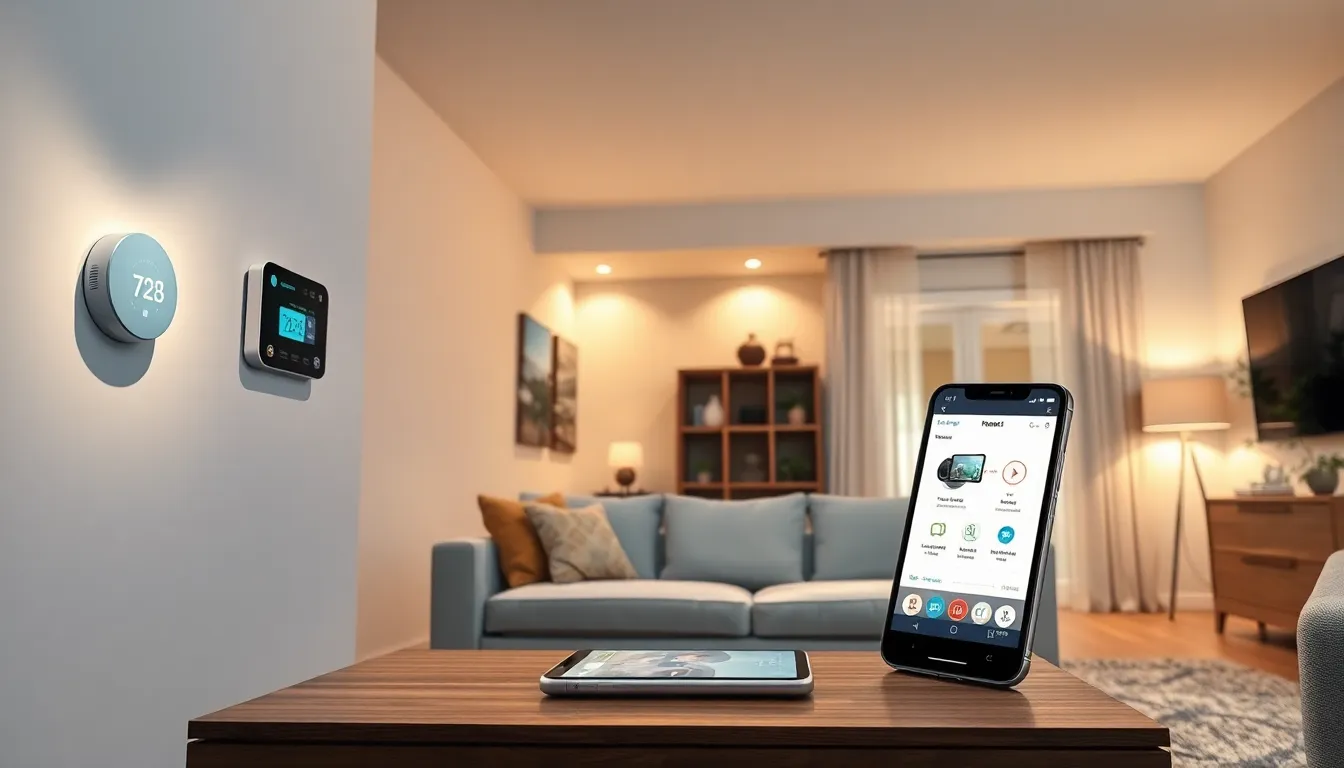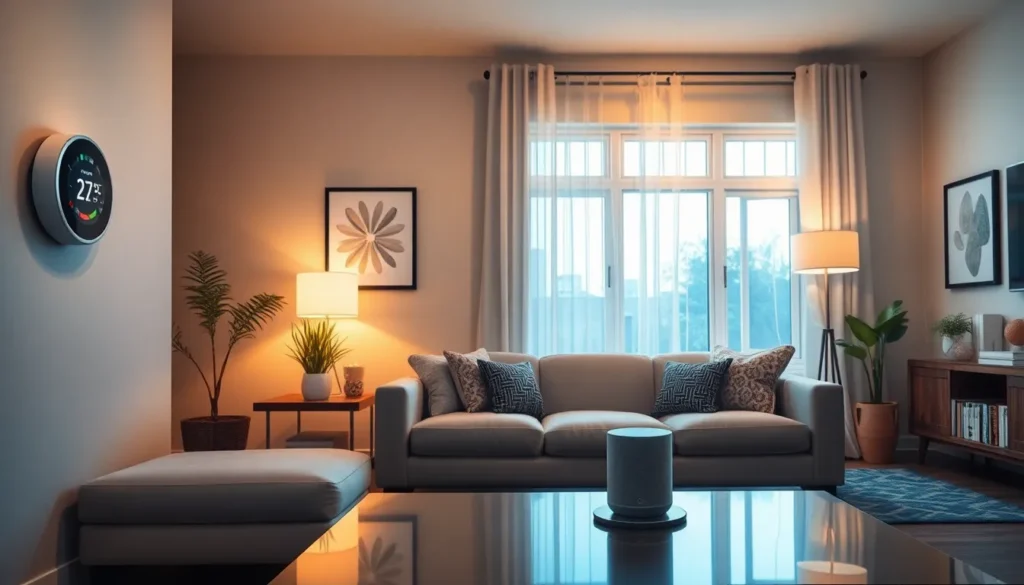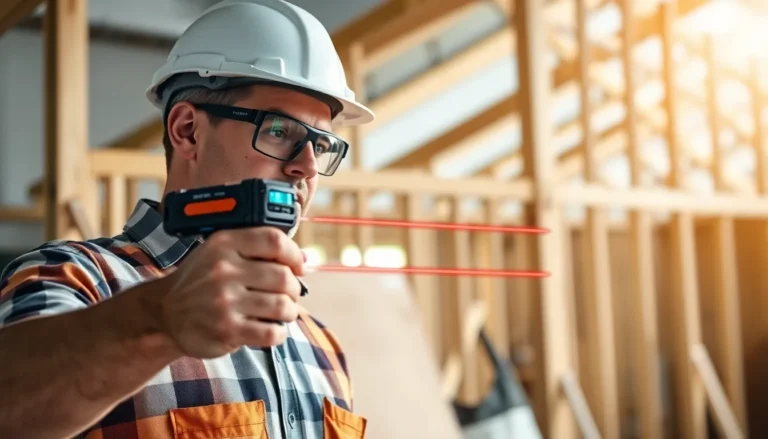Table of Contents
ToggleImagine walking into your home and having it greet you like an old friend. With smart home improvements, that dream can become a reality. From voice-activated assistants to automated lighting, these upgrades not only add convenience but also sprinkle a bit of magic into everyday life. Who wouldn’t want their coffee brewing itself while they’re still in bed?
Smart home technology isn’t just about showing off to your neighbors; it’s about creating a space that works for you. It’s like having a personal butler who never complains about the workload. By embracing these innovations, homeowners can save time, energy, and even a few bucks on those pesky utility bills. So why not dive into the future and transform your living space into a smart haven?
What Are Smart Home Improvements?
Smart home improvements incorporate technology to enhance convenience, security, and efficiency in residential environments. These upgrades utilize devices and systems that connect to the internet, allowing for remote control and automation. Examples include smart thermostats, which learn user preferences to optimize heating and cooling schedules, and smart security cameras that provide real-time monitoring and alerts.
Utilizing voice-activated assistants enables hands-free control of various smart devices, streamlining tasks like adjusting lighting or playing music. Automated lighting systems can be programmed to turn on or off based on schedules or occupancy, which not only adds convenience but also promotes energy efficiency by reducing unnecessary usage.
Smart home improvements contribute to a more personalized living experience, allowing homeowners to customize settings for comfort and security. Systems such as smart locks provide keyless entry, offering enhanced security while increasing accessibility for family members or guests. Energy management tools track usage patterns, pinpointing opportunities for saving on utility bills.
Incorporating smart appliances, like refrigerators that monitor inventory and suggest recipes, simplifies meal preparation and grocery shopping. Homeowners can also manage their smart home ecosystems through a central hub, ensuring seamless integration between devices. These advancements create environments that respond to user needs and preferences, making daily life more efficient and enjoyable.
Overall, smart home improvements represent a shift towards modern living, encouraging homeowners to optimize their spaces for comfort, security, and energy conservation. By embracing this technology, individuals experience a blend of convenience and innovative solutions tailored to their lifestyles.
Benefits of Smart Home Improvements

Smart home improvements offer significant advantages by enhancing convenience and optimizing daily living. These innovations lead to a more efficient and secure home environment.
Increased Energy Efficiency
Energy efficiency improves with smart home devices. Smart thermostats learn usage patterns and adjust temperatures automatically. Automated lighting systems can turn off when rooms are unoccupied, reducing waste. Energy management tools also provide insights into consumption habits. With these features, homeowners see a decrease in utility bills and lower environmental footprints. Notably, homes equipped with energy-efficient devices consume up to 30% less energy than traditional homes.
Enhanced Security Features
Security features become more advanced through smart home improvements. Smart cameras provide live feeds and alerts for unusual activity, ensuring constant surveillance. Homeowners can remotely monitor their property using smartphones or tablets. Additionally, smart locks enable keyless entry, allowing secure access without traditional keys. Integration with alarm systems enhances overall safety, providing peace of mind. About 60% of homeowners report feeling more secure after installing smart security devices.
Popular Smart Home Devices
Smart home devices enhance convenience, security, and energy efficiency. These innovations transform everyday living through automation and connectivity.
Smart Thermostats
Smart thermostats use sensors to learn household temperature preferences. They adjust heating and cooling automatically, optimizing energy usage. Studies show these devices can reduce energy consumption by up to 30%. Homeowners enjoy the flexibility of remote control via smartphone apps. Additionally, some models provide energy reports to identify patterns and savings opportunities. Many users appreciate the integration with voice-activated assistants, enabling hands-free adjustments.
Smart Lighting Solutions
Smart lighting systems offer customizable ambiance for any room. They allow users to control brightness and color through smartphone apps or voice commands. Energy-efficient LED bulbs last longer than traditional ones, reducing replacement frequency. Many systems can schedule lights to turn on or off automatically, enhancing security when away from home. Furthermore, motion sensors can trigger lights, ensuring safety in dark areas. Users value the ability to create lighting scenes for different activities, from relaxation to entertaining.
Home Security Systems
Home security systems encompass cameras, alarms, and smart locks to protect residences. These devices provide real-time monitoring and alerts for unusual activity. Homeowners can access live feeds through smartphone applications, ensuring peace of mind away from home. Many smart security cameras offer features like night vision and two-way audio for remote communication. Smart locks eliminate the hassle of keys, allowing keyless entry through smartphones or keypads. Enhanced integration creates a comprehensive security environment, fostering feelings of safety and control.
Tips for Implementing Smart Home Improvements
Implementing smart home improvements requires a thoughtful approach. These enhancements offer convenience and efficiency when done correctly.
Start Small
Begin with one or two devices to ease into smart technology. Smart plugs or smart bulbs can serve as an excellent entry point. These devices provide immediate benefits, such as energy savings and automation. Experience the impact before investing in larger systems. Gradually incorporating more devices makes integration smoother and less overwhelming. It’s easier to adjust to new technology in manageable increments. Assess how each device impacts daily life and make adjustments as needed.
Consider Compatibility
Ensure devices are compatible before making purchases. Compatibility simplifies integration across the network. Some ecosystems, like Google Home or Amazon Alexa, offer seamless connectivity between devices. Research which brands and models work well together. This step prevents future frustration and enhances overall functionality. Smart devices from different manufacturers sometimes struggle to communicate effectively. Prioritizing compatibility leads to a more cohesive smart home setup. Understand that interconnected devices create a more efficient environment, maximizing the benefits of smart technology.
Embracing smart home improvements opens the door to a more efficient and enjoyable living experience. By integrating technology into daily routines homeowners can enjoy enhanced convenience and security. The ability to control devices remotely and automate tasks not only saves time but also promotes energy efficiency.
As smart technology continues to evolve the potential for personalized living spaces grows. Homeowners are encouraged to start small and gradually expand their smart home systems. This approach allows for a seamless transition while maximizing the benefits of modern innovations. Ultimately smart home improvements represent a significant step towards a smarter and more sustainable future.







